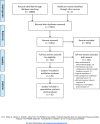A systematic review and meta-analysis on the effects of physically active classrooms on educational and enjoyment outcomes in school age children
- PMID: 31237913
- PMCID: PMC6592532
- DOI: 10.1371/journal.pone.0218633
A systematic review and meta-analysis on the effects of physically active classrooms on educational and enjoyment outcomes in school age children
Abstract
Objectives: Despite the relationship between physical activity (PA) and learning outcomes, the school system has not been able to support the inclusion of PA throughout the day. A solution to this problem integrates PA into the academic classroom. The objective of this review is to determine the impact of active classrooms compared to traditional sedentary classrooms on educational outcomes of school-aged children.
Design: We searched ERIC, PubMed, PsychINFO, and Web of Science, reference lists of included studies for randomised controlled studies. Independent reviewers screened the texts of potentially eligible studies and assessed the risk of bias. Data were pooled using random-effects models on standardized mean differences.
Results: This review identified 25 studies examining educational outcomes, including approximately 6,181 students. Risk of bias was assessed as either some or high risk of bias for most of the studies and outcomes. Pooled data from 20 studies and 842 participants measuring academic performance shows a small positive effect of active classrooms compared with traditional, sedentary classrooms (SMD = 0.28, 95% CI: 0.09 to 0.47).
Conclusions: Physically active classrooms may slightly improve academic achievement compared to the traditional sedentary lessons. Future research is needed to ensure that studies are adequately powered, employ appropriate methods of randomization, and measure a wide range of important student outcomes across the full spectrum of the school-age.
Conflict of interest statement
The authors have declared that no competing interests exist.
Figures
References
-
- Sibley BA, Etnier JL. The relationship between physical activity and cognition in children: a meta-analysis. Pediatr Exerc Sci. 2003;15: 243–256.






